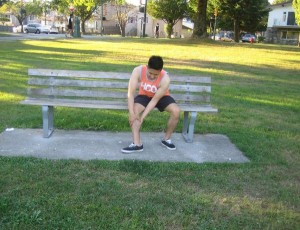
A lot of people participate in sports whether it is recreational or competitive are at high risk of acquiring sports related injuries. Recreational athletes tend to push themselves beyond the level of their physical conditioning and incur injuries as a result of extreme exertion and physical stress. On the other hand professional athletes despite their training and peak conditioning are also susceptible to injuries even though their training is supervised closely to minimize the occurrence of such injuries.
Sports related injuries affecting the musculoskeletal system may be acute (eg. sprains, strains, dislocations and fractures) or they can be gradual resulting from overuse (eg. chondromalacia patella, tendinitis, stress fractures). These injuries significantly affect mobility which severely incapacitates an individual from performing activities of daily living. Moreover, such injuries can result in asymmetrical healing brought about by delayed medical intervention or even permanent disability if not properly evaluated, diagnosed and treated.
Common sports related injuries
- Contusions resulting from direct falls of blows. The initial dull pain becomes greater accompanied by edema and stiffness occurring within 24-36 hours following the injury.
- Sprains are considered as the most commonly reported sports related injury. Sprained ankles account for nearly 25% of all sports-related injuries. Third degree sprains when not properly managed can become unstable which generally need surgical intervention.
- Strains manifest with a sharp, stabbing pain caused by bleeding and immediate muscle spasm. Most athletes who experience strains because the muscles supporting structures can only perform up to a certain point especially if athletes push their bodies to the limit wherein stress and exhaustion takes its toll on the body.
- Tendinitis (inflammation of the tendon) is caused by overuse and overextending the elasticity of the tendons of a particular extremity. Tennis players, runners, gymnasts and basketball players are generally the ones who are at risk of experiencing Tendinitis.
- Traumatic fractures occur with falls. Skaters, bikers and ballet dancers are the ones predisposed to such injuries such as Colles’ fracture of the wrist when they fall on outstretched hands.
- Dislocations are seen with sports that involve throwing or lifting.
- Stress fractures occur with repeated bone trauma from activities such as running, jumping and throwing as well as from sports that include track and field, gymnastics, basketball, rowing, baseball and tennis. In general, stress fractures of certain bones occur less often or more often likely to occur in some athletes than in others.
Management of sports related injuries
Patients who have experienced sports related injuries are often highly motivated to return to their previous level of activity. Compliance with restriction of movement and gradual resumption of activities may be a significant problem for such individuals. They need to be taught how to avoid further injury
or new injury by structured health teachings promotion of healing and prevention of injury. With the recurrence of symptoms being highly evident among athletes, they need to be instructed and reinforced with treatment modalities in limiting their level of intensity in their activity to a more comfortable and less strenuous ones. The time required to recover from a sports related injury can be as short as a few days or considerably longer than 6 weeks, depending on the severity of the injury.
Prevention of sports related injuries
Sports related injuries can be prevented by using proper equipment, effective training and conditioning. Specific training needs to be tailored to the person and the sport in which he is participating. Stretching prior to engaging in sports is the most effective way to prevent injury as this practice significantly prepares the muscles and underlying support structures to be warmed up. Finally, the athlete needs to be taught to “tune-in” to his/her body for symptoms that may indicate undue stress that might result in untoward sports related injuries.
